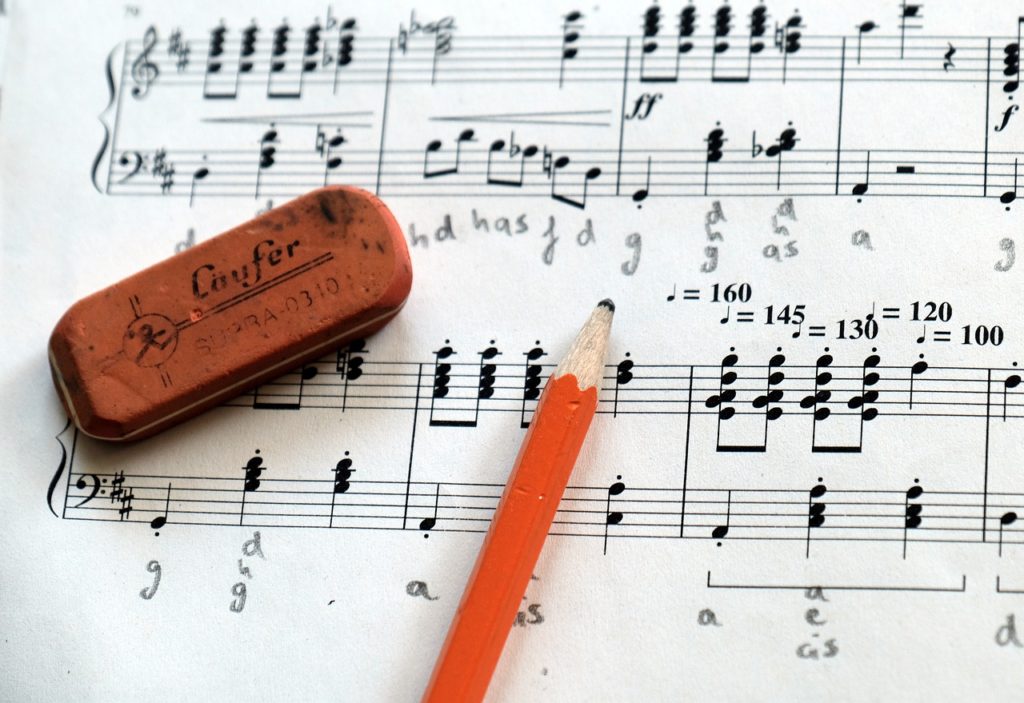Estimated reading time 4 minutes
Table of Contents
How Can I Learn the Basics of Music Theory #1: Deepen Your Understanding of Music
Do you want to understand how music works? Studying music theory is a worthwhile experience that’ll deepen your understanding of music and enhance your creativity. Where should you begin? In this post, you’ll learn what the basics of music theory are and be given the resources to learn them. Keep reading How Can I Learn the Basics of Music Theory to start your musical journey today.
Please note that some topics such as scales music, modes music, and musical keys are all intertwined:
- For example, a music mode is just a special type of music scale, which is almost the same thing as a musical key. Likewise, major and minor music scales are the same thing as major and minor music modes respectively.
- Likewise, modulation relates to changing keys (i.e., music scales), but also is an important aspect of the study of harmony.
- Therefore, as you start learning music theory, be sure to look for the connections between concepts.
This post uses musical terms. For definitions, see the Glossary at the end of the article.

How Can I Learn the Basics of Music Theory #2: What are the Basics of Music?
Essentially, learning music theory is about learning the patterns that composers use to create music. It covers:
- Melody
- The Music Notes on a Scale
- Intervals
- Scales in Music
- Modes in Music
- Music Scale Degrees
- Rhythm
- Harmony/Chords
- Meter/Time Signatures
- Form
You can use music theory to analyze (i.e., understand) music.
Related areas of learning:
How Can I Learn the Basics of Music Theory #3: Notes, Intervals, Melodies, Modes and Scales
Mobile users: for best results reading the keyboard diagram, tilt your screen 90o to the right.

To access an online keyboard: click here.
Melody:
Melody happens when you play notes in succession one after the other.
One of the most basic areas of music theory is the study of music notes on a scale:
- Look at the keyboard diagram above, and you’ll see that the white keys (the naturals) are named for the first seven letters of the alphabet.
- Originally, those were the only music notes on the scale.
- Then, the mediaeval music theorists realized that they needed more music notes for their scale. (This is where the black keys, or accidentals, came from.)
The next theory concept is that an interval is a distance between music notes. Let’s start with the white key intervals:
- C to D is a second
- C to E is a third
- C to F is a fourth
- And so on until you get to C to C, which we call an octave.
- The octave spans eight notes on the keyboard.
- This works for any pair of white keys.
- You’re just counting the white keys on the keyboard.
However, when the music theorists realized they needed more music notes for the scale, they also realized that they needed to break the keyboard into smaller intervals:
- For a full list of intervals: click here.
Melodies, modes, and scales music theory links:
Scales of Music:
Modes of Music:
The Degrees of the Music Scale:
Writing Melodies:
- How to Extract a Melody from Your Lyrics
- Ten Ways to Spice Up Your Melodies with Melodic Variation
- Writing Great Songs Using Rhythmic Motifs
Accidentals:

How Can I Learn the Basics of Music Theory #4: Rhythm, Meter, Keys, Modulation, Harmony, and Form
The following basic music theory topics cover timing, chords, song structure, keys, and modulation.
Rhythm:
Simply put, rhythm is playing notes in time.
For basic clapping exercises:
Time Signatures:
Time signatures organize the notes into groupings of beats. Time signatures can also be called meter signatures because they “meter” (or measure) the number of beats:
Simple meter:
Compound Meter:
Harmony:
- Harmony refers to what notes work well together.
- So, harmony happens when you play two or more notes at the same time.
- The term chord comes from the same root as the word accord (meaning agreement) and is almost synonymous with harmony. However, a chord has three or more notes.
Harmonizing a Melody:
Harmonic Analysis:
- Explain Roman Numeral Analysis in Layman’s Terms for Me
- Chord Progressions (Including the 12 Bar Blues)
- Tonic vs. Root in Music Theory
- What Exactly Does I7-vi7-V7 Mean?
- What’s the Deal with These iv-V-VII Chords?
Song Form:
The form defines the sections of a song: verses, choruses, bridges, etc.
Keys and Modulation:
- A key has some of the notes from the 12 chromatic notes on the keyboard diagram above.
- For example, the seven notes of the G major scale will be in the key of G. Therefore, the terms key and scale are almost synonymous.
- In addition, when you modulate, you change from one key to another.
Posts:

How Can I Learn the Basics of Music Theory #5: Final Thoughts
Here’s a summary of How Can I Learn the Basics of Music Theory. If you want to learn music theory, you must know:
- Melody
- The Music Notes on a Scale
- Intervals
- Scales in Music
- Modes in Music
- Music Scale Degrees
- Rhythm
- Harmony/Chords
- Meter/Time Signatures
- Form
I know this seems like a lot to learn, but this really is music theory for beginners:
- Why? Because there’s much more to learn from here.
- Therefore, you’ll need to practice getting the basics of music theory down, so that you’ll be ready to learn more advanced concepts later.
- For example, after you’ve explored the links above, you can use the Glossary for further study.
Related Posts
- Harmony is Tone Color
- I’m Having a Hard Time Keeping a Steady Beat
- D’you Want Some Music Tips and Tricks I’ve Learned Over the Years?
© 2024 Geoffrey Keith
Join me for in-person or online lessons today!
Back to the All-Purpose Music Tips and Topics category blogs page
Glossary
Explore Mozart’s Enchanting Music in Less Than Four Minutes
Do you want to know Mozart and his music but not take a ton of time? Mozart, along with Bach and Beethoven, is in an elite category of classical composers. If your average person on the street knowns any name in classical music, it’s probably one of those three. Keep reading to explore Mozart’s enchanting music in less than four minutes. Estimated reading time 3 minutes.
Read MoreWhat Are the Small “>” Signs Above or Below the Notes?
Have you ever asked, “What are the small “>” signs above or below the notes?” We call them and other signs like them articulations of force. Read on to learn what they tell us to do when we see them in sheet music. Estimated reading time 3 minutes.
Read MoreAngels We Have Heard on High: A Powerful Carol of Joy [Words]
Do you want to learn to sing “Angels We Have Heard on High?” In this article, you’ll get the essentials: 1) a video of the song “Angels We Have Heard on High,” 2) the “Angels We Have Heard on High” words, and 3) an easy-to-read shape note score with a sing along song track. Keep reading to celebrate with Christmas music! Estimated reading time 2 minutes.
Read MoreHow to Tune Country Blues Guitar
Want to get the authentic sound of country blues guitar? Frustrated that your guitar sounds different from your favorite blues artist? The guitar’s tuning impacts the sound. Read more to learn how to tune country blues guitar to achieve an authentic blues sound. Estimated reading time 7 minutes.
Read More



![Angels We Have Heard on High - A Powerful Carol of Joy [Words] - Christmas Bear Playing Piano](https://successmusicstudio.com/wp-content/uploads/2024/05/Angels-We-Have-Heard-on-High-A-Powerful-Carol-of-Joy-Words-Christmas-Bear-Playing-Piano-300x240.jpg)
